Identifying Garden Pests - Spraying Roses
Growing roses means to live with all sorts of garden insects. Identifying garden pests and knowing the good guys is essential to keep a natural balance in your garden.
Watching my roses growing is exciting and fun. I also do enjoy bees, bumblebees, ladybugs and other insects buzzing around in the garden. That’s pure nature and a sign of a healthy garden balance.
But from time to time, mostly under the radar, some “bad” guys creep in and try to mess up my rose gardening life.
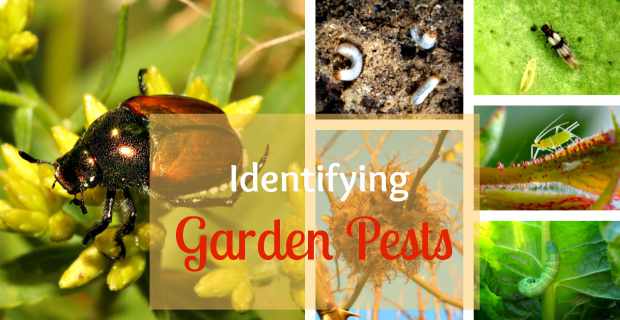
Many people don't differentiate. For them everything creeping, crawling and flying around is a pest and it's best to get rid of them immediately. Times have changed a lot the last years, and hopefully, these species die out soon.
As not only so-called bad pests populate our plants, but also many beneficial creatures, it is important to distinguish between good and bad guys. But how?
Spending time in the garden and investigating the flowers and plants carefully will help identifying garden pests at an early stage of an infestation. Knowing what’s going on in your garden is important.
Identifying Garden Pests
Most garden insects are harmless to roses, and many of them are beneficial. Unfortunately, some insects eat and damage them.
Among several other bad guys, two of the most common rose pests are thrips and aphids. While peak time for aphids is spring, when new soft and tender growth sets off for the first bloom, thrips will most likely occur over the summer.
Neither is not easy to identify, especially when the infestation has not progressed far yet.
Aphids are tiny insects and hide with a color similar to the part of the plant they occupy. They come in black, brown, green, blue, pink and many other colors.
For me, unmistakable signs are ants marching up and down the roses. With a bit of practice, they are easy to identify; if not, just use a magnifying glass to spot them.
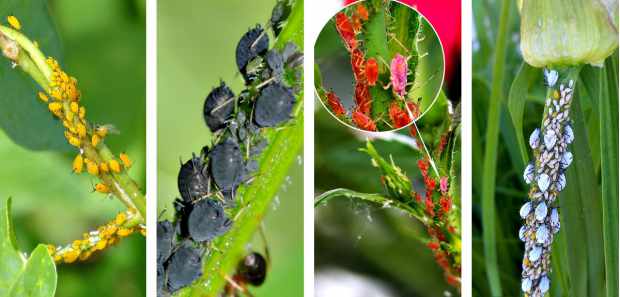
Thrips are almost invisible sucking insects. They make the buds turn brown and blooms will be discolored and malformed if they open, though mostly the buds will never open.
If you see unopened buds, which bend over at a sharp angle, thrips are almost likely at work. Under a magnifying glass and disturbed, the insects will jump up.
Spider mites, are tiny, sucking spiderlike insects. Sometimes you can see their webbing beneath the leaves. The leaves become yellowish and may start dropping with a heavy infestation.
Identifying garden pests such as Japanese beetles is easier. These metallic green-and-brown beetles feed on both flowers and foliage.
They emerge in midsummer from larvae in the ground and can be found as late as October. Unfortunately, they are voracious feeders, often skeletonize the whole plant, and for lack of natural enemies in the USA, it is not easy to get rid of them.
Caterpillars, the larvae of butterflies and moths, will hide during the daytime. You can find them with a flashlight in the evening or nighttime when they occasionally feed on the flowers or foliage of roses.
They are not a real threat to roses and can be removed manually.
Many creatures, beetles, insects, and worms will visit your roses, but most of them are not harmful to the plants and have their justification. The best way to deal with bad guys is to achieve a natural balance between bad and good bugs.
Meet Beneficial Insects
I know it is annoying to find pests on our nourished and fostered roses but often the insects are harmless or even beneficial.
That’s why it is important to know the dwellers on our rose bushes.
Lady Beetles or Ladybugs
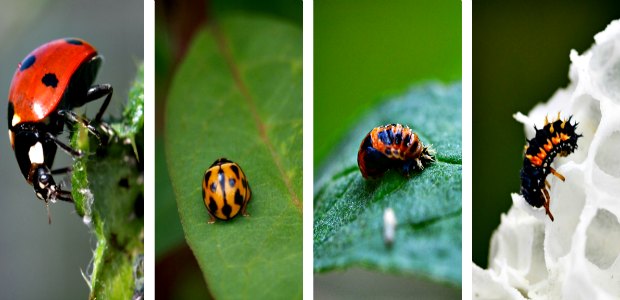
The lovely and familiar ladybug is one of the most useful insects in the garden.
The specialty of ladybugs and their larvae are to eat soft-bodied insects, especially aphids.
A ladybug can eat about 50 aphids a day.
Green Lacewings
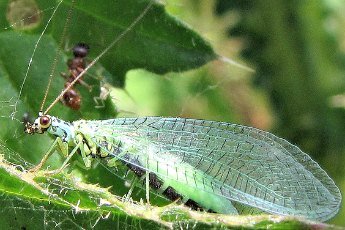
Green lacewings are known as aphid lions. As soon as the larvae hatch from the eggs, they develop a big appetite for aphids, soft-bodied insects, mites, thrips, whiteflies and small caterpillars as well as their eggs. The larvae are green-grey colored and look like small alligators.
As adults they feed on nectar, honeydew, and pollen, some species still feed on pests.
Predatory Mites
These small arachnids feed on plant eating thrips, spider mites and many pest eggs.
Predatory wasps
Tiny and harmless (to people) wasps that feed on eggs of moths and caterpillars
Tachinid Flies
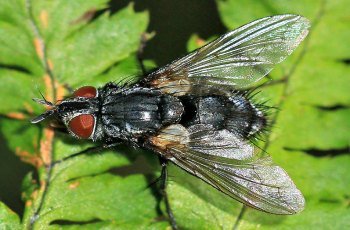
They look similar to house flies, but they are important enemies to Japanese beetles, caterpillars, sawflies and many other pests.
Beneficial Nematodes
Parasitic nematodes kill many pest insects in the soil but have no effect to beneficial insects like lady beetles or earthworms. They kill garden pests in the ground before they become adults.
Encouraging Beneficial Insects
To reduce garden pests and avoid using pesticides it is a good idea to encourage beneficial insects to come to your garden.
Spraying with a broad-spectrum pesticide means killing both good and bad insects.
Insecticides will destroy the natural balance, and once you start using them, it can take several seasons for the good guys to find their way back to your garden.
To reduce pests while avoiding pesticides, it is a good idea to encourage beneficial insects to your garden. But they need space to hide and reproduce.
A variety of plants like yarrow, dill or fennel will attract them and offer excellent possibilities to find shelter and for breeding.
If nearly no beneficial insects populate your backyard, buy them online and create a friendly environment, to make them want to stay.






New! Comments
Have your say about what you just read! Leave me a comment in the box below.